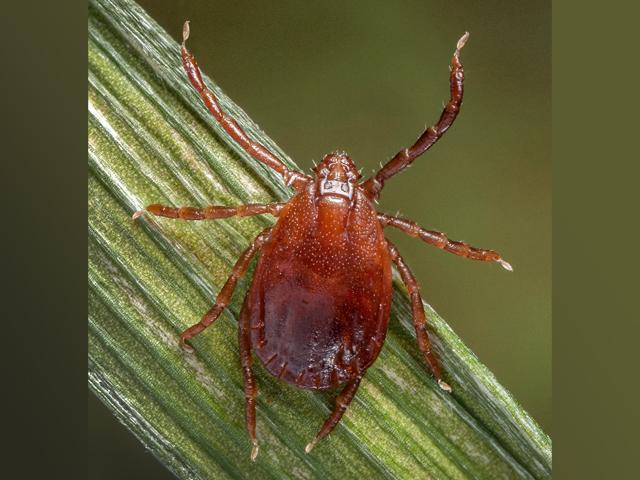Cattle Disease Spread by Ticks
Tick-borne Illness Has Been Discovered in Cattle Herds in 9 States
REDFIELD, Iowa (DTN) -- A tick-borne disease known as Theileria orientalis (ikeda) has been detected in several counties in Missouri. This marks the ninth state where this protozoal organism, first discovered in the U.S. in 2017, has been found.
In a news release, Craig Payne, director of University of Missouri Veterinary Extension, said cattle producers should watch for signs of the disease, including elevated temperature, depression and pale mucous membranes in cattle with mild infections. The organism causes disease by infecting red blood cells, then the immune system attacks the infected cells, causing anemia.
Cattle with severe infection will show severe depression and mucous membranes around the eyes and the vulva appearing with a yellow tinge.
DISEASE FOUND IN SEVERAL MISSOURI COUNTIES
Last month, the disease was found in six Missouri, including Bates, Howell, Oregon, Platte, Shelby and Webster, after being detected in Howell County last summer. The eight other states that have reported theileria are Virginia, West Virginia, Tennessee, North Carolina, Pennsylvania, Kentucky, Kansas and New York.
P[L1] D[0x0] M[300x250] OOP[F] ADUNIT[] T[]
Payne explained that most infected cattle never show symptoms of the disease, which is often confused with anaplasmosis. Other side effects include abortion in pregnant cows and loss of body condition. Death loss is usually less than 5%. The main difference between anaplasmosis and theileria is that rarely do animals under 2 years old contract anaplasmosis, and this is seen in calves and adult cattle.
TICK TRANSMITS INFECTION IN HERDS
Lew Strickland, University of Tennessee Extension veterinarian, said the Asian longhorned tick can carry theileria. Cattle become infected within three weeks after being introduced to an area with infected tick vectors. The Asian longhorned tick is now found in 19 states.
The tick eats blood meal from an infected animal and transmits it to other animals through its saliva. The disease can also be transmitted through needles and other equipment that have been in contact with an infected animal's blood and then used on non-infected animals. Symptoms can take up to eight weeks to appear. The infected animals are then lifelong carriers of the organism but are unlikely to show the symptoms again, according to Payne.
Strickland said the disease is challenging because there is not an approved effective treatment or vaccine. He suggests regular inspection of cattle for ticks and preventative measures such as pour-ons for control from March to November. Insecticide ear tags, back rubbers and side rubbers are all helpful for prevention. If Asian longhorned ticks are present, get a sample to your local veterinarian for species confirmation.
Animals that show disease symptoms have not shown a response to antibiotics, which are commonly used for treating anaplasmosis. Payne recommended managing clinical cases by minimizing stress and providing supportive care.
If disease is present in a herd, it's important to quarantine any new animals, change needles between animals and disinfect equipment that may be blood-contaminated to prevent further spread.
For more information, visit https://extension.missouri.edu/…
Jennifer Carrico can be reached at jennifer.carrico@dtn.com
Follow her on social platform X @JennCattleGal
(c) Copyright 2024 DTN, LLC. All rights reserved.






